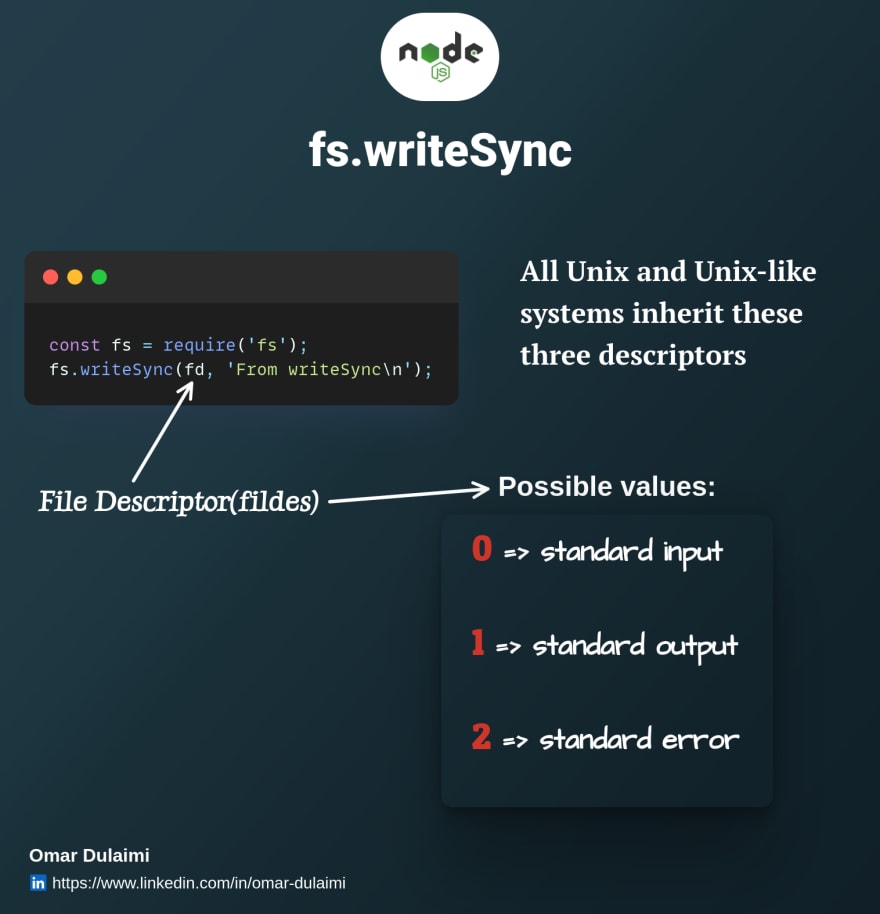What are 𝗳𝗶𝗹𝗲 𝗱𝗲𝘀𝗰𝗿𝗶𝗽𝘁𝗼𝗿𝘀 in 𝗡𝗼𝗱𝗲𝗷𝘀?
In my last post we talked about all the different ways you can write stuff out to the standard output, and we touched upon the file system method 𝘄𝗿𝗶𝘁𝗲𝗦𝘆𝗻𝗰.
Today we talk a little bit more about it's first argument, and what it really means under the hood.
The 1st arg is a 𝗳𝗶𝗹𝗲 𝗱𝗲𝘀𝗰𝗿𝗶𝗽𝘁𝗼𝗿, basically a unique identifier(unsigned integer) that represents a file or other input/output source like a pipe or a network socket. Negative values are reserved for error conditions and "no value".
Each Unix process should have the three file descriptors mentioned in the snap below. Which they correspond to the standard streams; 𝗽𝗿𝗼𝗰𝗲𝘀𝘀.𝘀𝘁𝗱𝗼𝘂𝘁, 𝗽𝗿𝗼𝗰𝗲𝘀𝘀.𝘀𝘁𝗱𝗶𝗻 and 𝗽𝗿𝗼𝗰𝗲𝘀𝘀.𝘀𝘁𝗱𝗲𝗿𝗿.
To avoid hardcoding these integers in your code, instead use the values provided by 𝗡𝗼𝗱𝗲𝗷𝘀:
0 => process.stdin.fd
1 => process.stdout.fd
2 => process.stderr.fd
Did you learn something new today?
Like and share this post, and follow me for more!







Top comments (0)